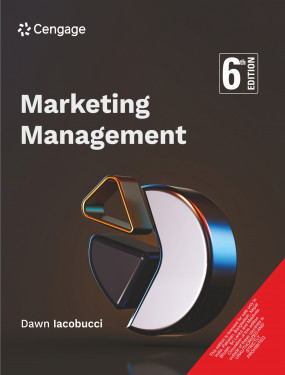Through ongoing research into students’ workflows and preferences, MKTG from 4LTR Press offers multiple options including an easy-reference, paperback textbook with Chapter Review Cards, and an innovative online experience—all at an affordable price. With MindTap, students can access their course materials and study tools anytime, and on most devices!
*Special prices for countries of South-Asia
- Every 4LTR Press solution comes complete with an engaging print textbook, tear-out review cards, an interactive digital solution, which offers study tools and the full text narrative, all delivered and influenced by a deep understanding of student’s workflow and learning styles. Available as print with online, print only, or online only, students have their choice of format all at the same affordable price.
- Shorter, comprehensive chapters in a modern design present content in a more engaging and accessible format that increases the number of students who read the chapter without minimizing coverage for your course.
Part 1 THE WORLD OF MARKETING
Chapter 1 An Overview of Marketing
Chapter 2 Strategic Planning for Competitive Advantage
Chapter 3 Ethics and Social Responsibility
Chapter 4 The Marketing Environment
Chapter 5 Developing a Global Vision
Part 2 ANALYZING MARKET OPPORTUNITIES
Chapter 6 Consumer Decision Making
Chapter 7 Business Marketing
Chapter 8 Segmenting and Targeting Markets
Chapter 9 Marketing Research
Part 3 PRODUCT DECISIONS
Chapter 10 Product Concepts
Chapter 11 Developing and Managing Products
Chapter 12 Services and Nonprofit Organization Marketing
Part 4 DISTRIBUTION DECISIONS
Chapter 13 Supply Chain Management and Marketing Channels
Chapter 14 Retailing
Part 5 PROMOTION AND COMMUNICATION STRATEGIES
Chapter 15 Marketing Communications
Chapter 16 Advertising, Public Relations, and Sales Promotion
Chapter 17 Personal Selling and Sales Management
Chapter 18 Social Media and Marketing
Part 6 PRICING DECISIONS
Chapter 19 Pricing Concepts
Charles W. Lamb, Texas Christian University
Joe F. Hair, Louisiana State University
Carl McDaniel, University of Texas, Arlington










